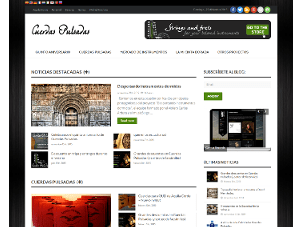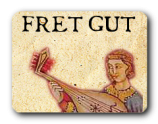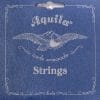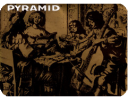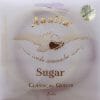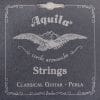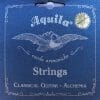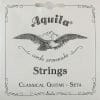We are pleased to share the last great project of WorkinGOpera , to those who already we presented a long time ago in this blog on the occasion of its appearance in 2012.
WorkinGOpera is an opera company specialized in recovering baroque operas, adapting them and creating a new, innovative and current product.
The aim of this group, made up of professionals specialized in musical performance with historical criteria, is to create a high-quality product by making creative and intelligent use of resources, as well as critically interpreting the material on which they work.
Among its members we can find young talents of the plucked string, such as Edwin García, Stanlislav Germain, Belisana Ruíz, Xavier Soler or Jacob Lenson.
His latest and suggestive project, “Everyone makes fun of me!” is a show of a comic and satirical nature that illustrates the fashion of playing the guitar “in the Spanish way” in early French court circles. 17th century.
La Sonorosa has created this show from the aesthetic and musical reconstruction of the book “Very easy method to learn to play the Spanish-style guitar ”published by Luis de Briceño in Paris in 1626. The iconography, the musical and literary sources, and the chronicles, have been the pillars of the creation of this show.

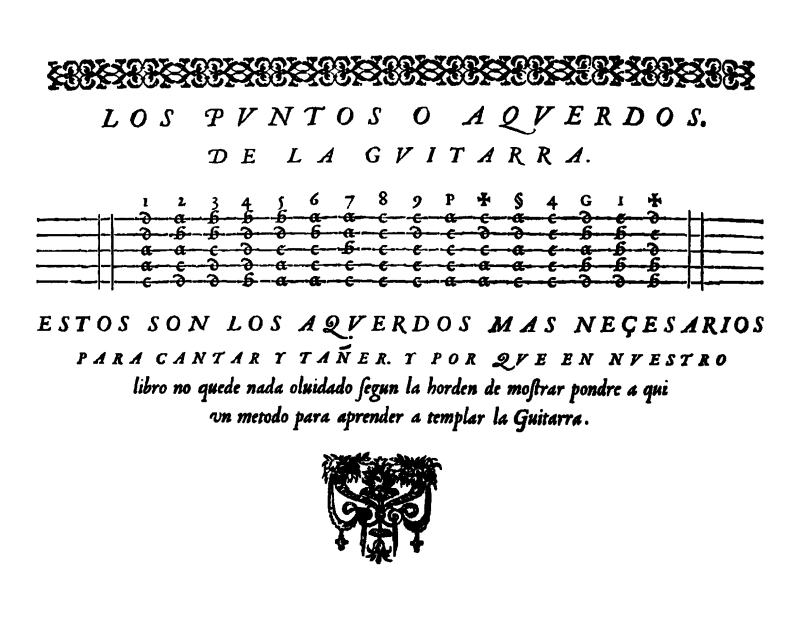
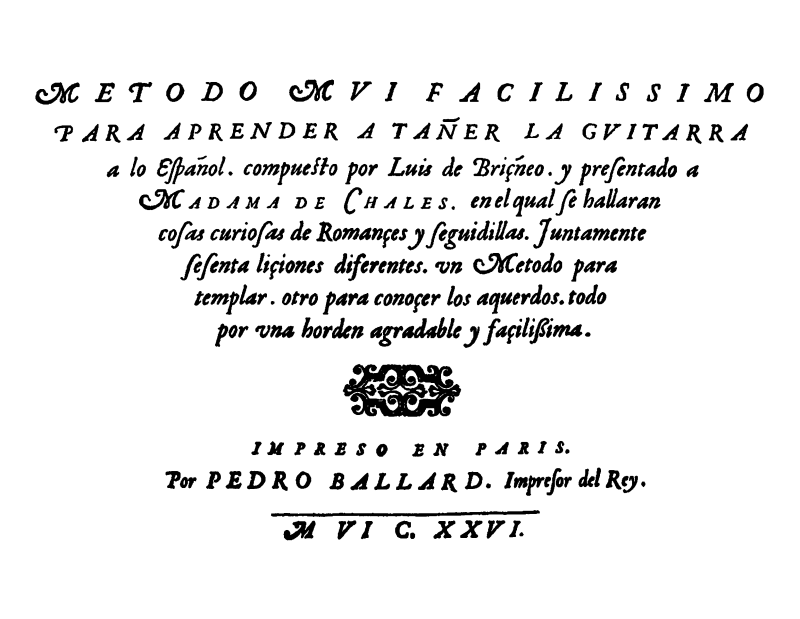




Strumming as a characteristic element of the “Spanish style”
At the dawn of the seventeenth century, the first didactic methods and first writing systems of the “rasguado style” appeared on the five-order guitar in Spain. With the appearance of the “rasgueo”, the guitar puts the rhythmic function before the contrapuntal possibilities, thus prevailing its traditional popular form. The “Spanish style” thus concentrates on the rhythmic-harmonic function of the instrument, developing on the basis of rhythmic strokes (strums), with complex chords in which the strings are struck all at the same time, according to various attack formulas of the hand. right. Thus, in this stage of the Baroque didactic works arise that teach the formation of chords with the left hand and the strumming of the right: treatises only for accompaniment, collections of dances and popular-type pieces in rasgñados style, vocal works to be accompanied strumming, as well as song texts to accompany. A specific alphabet for the five-order guitar was also developed, the “Castilian alphabet”, which used numbers, letters and also signs, used by composers of the time such as Luis de Briceño or Lucas Ruiz de Ribayaz.
Luis de Briceño, ambassador of the “Spanish style” in France
Luis de Briceño (1610-1630) was a guitarist and theorist of Spanish music, probably of Galician origin, who is credited with the work of awakening interest in France in the Spanish way of playing the five-string guitar, with the strummed style, where the lute was considered the prevalent plucked string instrument. His “Very easy method to learn to play the guitar in Spanish”, published in Paris in 1626, is one of the main sources of knowledge of the “Spanish style” and the “rasgñados”, especially due to its informative nature.
“¡Todos se burlan de mí!”
Ya no quiero cantar más Por el sujeto que tomo Que si se burlan de mí Yo me burlaré de todos!!
Romance. Luis de Briceño. 1626.
We return to the Sonorosa project, where the staging takes place in the living room of a Spanish lady who lives in Paris and unexpectedly receives a visit from a group of Spanish musicians led by Don Luis de Briceño. These begin a sarao where guitars, dance, music, vivacity, recitation and mischief are the protagonists. An interrupted air de cour, a demanding girlfriend, an indignant married man, a lady who is accused of breaking the ten commandments, the villain’s game, some broken dishes, a priest, a one-eyed man, a good wine, an insatiable woman and many others things, they accompany Don Luis in his company of defending himself from those who make fun of his guitar and his son. La Sonorosa is currently halfway to achieving enough support to get ahead, making use of crowdfunding in Verkami.Edwin, how did the La Sonorosa project come about, what elements have you relied on to shape the show?The Sonorosa project stems from the concern of delving into the specific repertoire of the guitar from the late sixteenth and early seventeenth centuries. The way of playing the guitar “in the Spanish way”, that is to say, of strumming, represented a very important advance at a musical level, although the history of music has not yet recognized it, thanks to the fact that for the first time he made a vertical reading of the guitar. polyphonic loudness. Putting it more simply, in the field of guitar the chord was invented, a tool that has been used to this day in a wide variety of genres and musical styles.

What artistic elements are combined in the show?In the show, music, dance and poetry are combined and presented as an indivisible conjunction of elements, just as they were originally conceived, and naturally, in the same musical forms that concern us. For example, the term “folía” has clear meanings in various artistic disciplines of the time, such as music, dance or poetry. We wanted to present this research work through a staging for this reason and thus be able to teach the public all the materials of the book from different points of view and in a lively way.
How is the grouping formed? How does each member participate in the work?The format of the grouping is also based on some historical chronicles and for this reason most of the instruments are plucked strings. It is presumed that there were groups in the itinerant and theater sphere with a presence of numerous groups of guitars or various plucked string instruments in general. In addition to a small group of guitars and lauds, there are two singers, a Baritone and a Soprano, who are the protagonists of the argument and a dancer and a violinist, who, in addition to giving color to each scene of the show, are secondary characters in each one. of the scenes.

And what role does the plucked string have in La Sonorosa? What instruments can we see and hear?The instruments we use are basically three types of baroque guitar (in D, in E and A), a Renaissance lute and a theorbo. The instruments are used according to the requirements of the music and the scene, and since within the argument the competition between the lute and the guitar as an entertainment instrument is in the background, the members constantly change instruments, sometimes proving the worth of one and then curiously touching the other.

Edwin, in what format is the show presented? What plans do you have for the project and for workingopera?The show is presented in a particular format, it is not a concert but it is not a theatrical work either, rather it is close to the format of a musical but with a historical musical content. We are currently carrying out a Verkami campaign to complete the scenic part of the show and we intend to premiere it on April 30 at the Sarrià theater in Barcelona. On the other hand, in the opera company, we are working to premiere in 2017 a version of L’Ormindo by Francesco Cavalli with the musical direction of Edwin García and the stage direction of Marc Rosich.
Thanks for your time and congratulations to everyone for the project.

